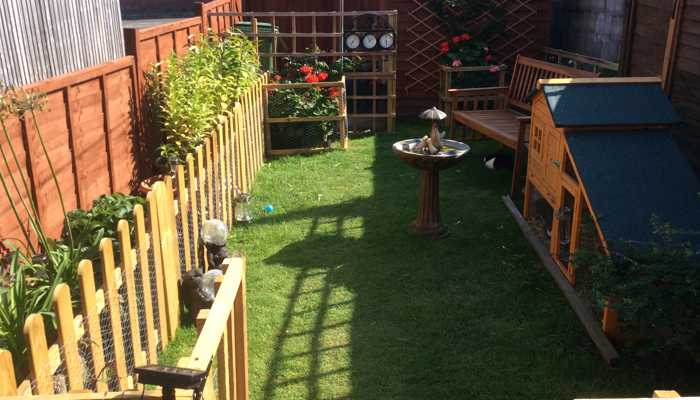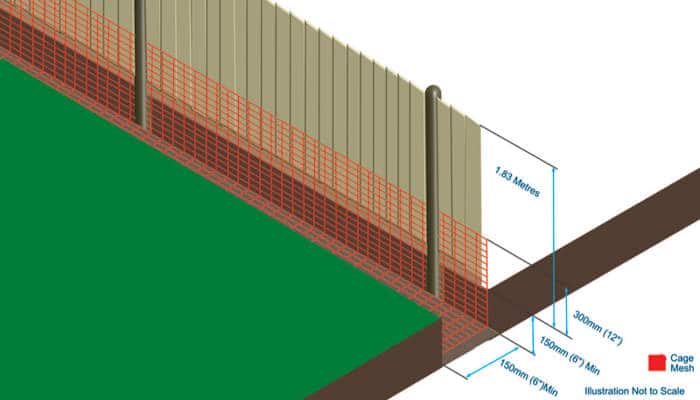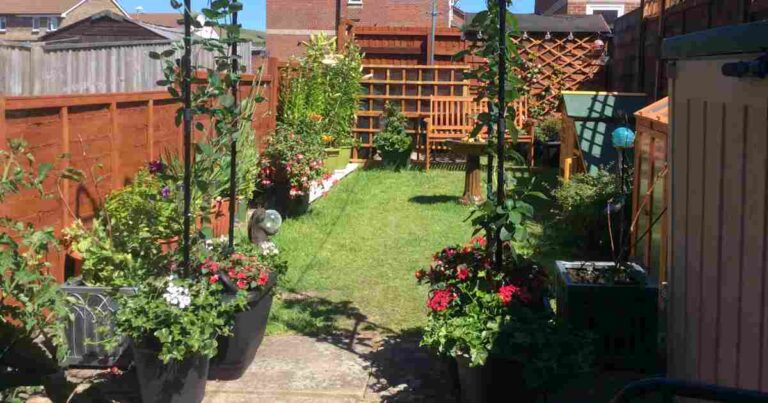introduction
Are you tired of your furry friends, munching on your precious plants and flowers? Or considering owning or have a pet rabbit that you would like to give unmanaged access to your garden?
Well, pet rabbits love being in a rabbit proof garden, able to forage, run, jump and play. But, if you are a rabbit keeping gardener, they can also be your worst nightmare! So, in this post, we’ll discuss the methods I used to create my ultimate rabbit proof garden. That will keep your bunnies safe and let you say goodbye to providing a bunny buffet. So, grab a cup of coffee, and we’ll dive into creating the ideal space for your rabbits to thrive. While you can enjoy cultivating a garden, that will remain intact!
Table of Contents
The Importance of a Rabbit Proof Garden
Creating a rabbit proof garden is essential to providing a suitable environment for free roaming rabbits. Rabbit proofing will not only prevent rabbits from escaping, but stop plants being nibbled or destroyed. Safeguarding plants in a rabbit proof garden can be done with internal fences and barriers, or by using raised beds. However, it’s not just your plants that need protection, because pet rabbits also need protecting from themselves.
Keeping rabbits indoors, or confined outside, makes free time in a rabbit proof garden beneficial to their health. However, treating them to an alfresco bunny buffet, of even safe healthy plants, is detrimental to their health! Because allowing your rabbit to eat substantial amounts of cultivated plants in a rabbit proof garden can kill your bunny. But the odd wild dandelion, common daisy or clover appearing in your lawn, rabbits can safely nibble.

Rabbit Proof garden Fences
Rabbit proofing most existing fences is possible, providing they are in good condition. However, boundary fences should create a 1.83 metre solid barrier, i.e., walls, close boarded timber, or larch wood panels. But I strongly recommend inspecting any boundary fence before rabbit proofing your fences below ground. As rabbits can squeeze through a surprisingly small gap, and are experts in using any weak spot to their advantage.
Small gaps, holes and rotting timber will encourage rabbits to chew the fence. Thus, giving them a head start in an escape attempt! Ok rabbits are not prisoners and don’t plan to escape, but they are curious wood chewing opportunists. Therefore, if they find or chew a hole large enough, their curiosity will have you searching for missing rabbits. So, finding and repairing a problem is far better than having to track down an escape artist.
Rabbit proofing fences below ground
Rabbits can, and will, dig under fences. Therefore, rabbit proofing your boundary fences below ground is essential. But boundary walls, built on a concrete footing, do not need rabbit proofing below ground. However, depending on your location and predatory animals in your area. The tops of walls, fences and gates will need extra predator proofing, if you intend keeping free roaming rabbits.
However, there are three ways to prevent rabbits digging under rabbit proof fences. But for boundary fences, I recommend extending the fence 300mm under the ground, using plastic coated cage mesh.

But if predators cannot dig close enough to get under your fences, because of paving or tarmac. The depth of the wire mesh can reduce to a minimum of 150mm, and curve inwards across the trench. The mesh should run around the whole boundary with no gaps, to keep rabbits in, and if needed, predators out. However, do not use chicken wire as a cheaper, more readily available alternative! Because its thin wire, and large mesh, will allow determined rabbits and predators to chew through it.
Internal garden fences
For internal fences and barriers, galvanised or plastic coated cage mesh gives the best protection. However, chicken wire is now an alternative for areas in a rabbit proof garden that are easily inspected. Internal fences with a minimum height of 600mm. Will protect boarders, and beds, or restrict rabbits from parts of your garden. But an internal rabbit proof garden fence will also need to prevent rabbits digging underneath them.
However, the security of a boundary fence is unnecessary. So, laying an apron of 300mm wide, well pegged down gage mesh, or paving slabs. Will deter your rabbits from digging under the fence.
Rabbit proof garden gates
Having a rabbit proof fence will also require a rabbit proof gate, allowing you access while keeping your bunnies contained. Now, having a heavy solid gate may be preferable, but in internal wire fences with lightweight posts it’s not practical. Therefore, using a lighter slatted gate, wired at the bottom to prevent rabbits chewing the slats. May be the better option. But a solid gate is preferable in rabbit proof boundary fences, where the weight is not a problem.
However, if rabbits can dig under the gate, as with an internal fence. Laying a wire or paving slab apron will also stop them digging.

Using Frames, raised beds and planters
Existing pots and planters, you can protect by constructing 600mm high, free-standing mesh covered, timber frames. Placed in position and secured, if needed, with hooks and eyes, creating a barrier that allows easy access for maintenance.

Three-sided frames for the individual planters next to a straight fence, and two-sided frames for pots in a corner. However, using raised beds and containers can be a satisfactory alternative for creating a rabbit proof garden. By providing a rabbit safe area for your flowers and vegetables, without the use of fences and barriers.
But raised beds and containers or foliage, must be at least 600mm above ground level to prevent rabbit reaching them.
plant safety
Plant safety is vital to your rabbits wellbeing! So, take care when choosing plants to include in your garden, and you must not use any garden chemicals. Whereas natural pest controls and fertilisers are safe for bunnies, and far better for the environment.
Some plants that are poisonous to rabbits are commonly used to deter wild rabbits. So, plants described as rabbit proof or rabbit resistant should have no place in your garden without taking extra precautions.
Rabbit proof plants are toxic! But to a rabbit the living plant smells bad, and they will not eat them. But your bunny is not safe when the plant dies and sheds its leaves!
However, rabbit resistant plants, which are also toxic, smell good to eat, and rabbits may nibble them. But as they don’t taste nice, rabbits won’t eat them, but go to find something more palatable.
The problem with plant toxins is, tiny amounts do not have any effect, but build up in the rabbit’s body. So repeated small amounts, over time, will eventually make them seriously ill and may kill them. Hence, poisonous plants behind a fence or barrier, which rabbits cannot reach, are still a hazard when shedding leaves.
Because dead leaves may lose their smell and taste, but not all poisonous plant leaves lose their toxins. So, reduce the risk of toxic leaves spreading to rabbit accessible areas. By netting over poisonous plants in autumn, and regularly removing fallen leaves from the garden.
conclusion
In conclusion, creating a rabbit proof garden brings many benefits for both rabbits and their owners. Not only to ensure the safety and well-being of our long eared hopping companions. But it also provides peace of mind for us as gardeners. By implementing measures like secure fences, barriers, and carefully chosen plants. You can create the ideal space for your rabbits to thrive. While you can enjoy cultivating a garden, that will remain intact!

